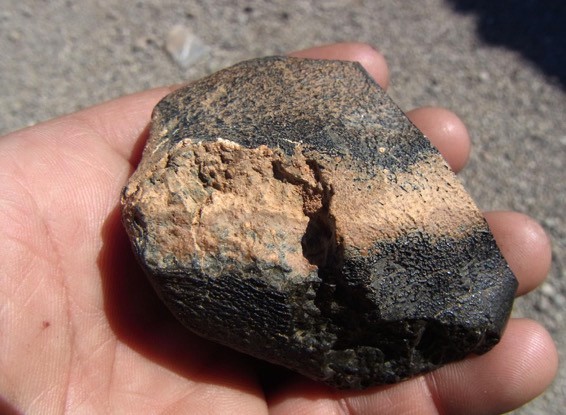By Ana Verayo, | February 04, 2017

Martian meteorite "Northwest Africa 7635" was discovered in Algeria in 2012. (Mohammed Hmani/Purdue University)
Astronomers have determined that volcanoes on Mars have been active for more than two billion years after studying a mysterious Martian meteorite.
Scientists were able to determine this Martian volcanism by examining a meteorite from Mars called Northwest Africa 7635 (NWA) that solidified and cooled some 2.4 billion years ago. It was uncovered in Algeria in 2012. This means that this meteorite cooled two billion years earlier than other rocks that originally came from this volcanic center in Mars.
Like Us on Facebook
Scientists say that this discovery can lead to important clues about one of the longest active volcanoes in the solar system.
A team from the University of Houston and Purdue University examined two grams of meteorite material taken from NWA 7635's interior. Scientists say that NWA 7635 is made from a type of volcanic rock known as shergottite which solidified around 140 million years ago.
Upon comparing this specimen to other Martian shergottites that are around 327 million years to 574 million years old, the team found that all of these shergottites along with NWA 7635 were ejected from Mars due to a massive and violent impact that occurred 1.1 million years ago.
According to geology professor Tom Lapen of the University of Houston, since they all come from a similar volcanic source and have the same ejection time, it was concluded that all of these meteorites are from a single location on Mars.
This means that this single location was active for at least two billion years which is a significant part of Mars' 4.57 billion years old history.
The team was able to support their theory by using a method that involves crater counting to estimate the age of Martian surface. Researchers say that their evidence is based on crater counting chronology from high-resolution images. These images reveal how calderas of major volcanoes on Mars in the Elysium and Tharsis regions have experienced repeated eruptions, activations, and resurfacing. These volcanoes are estimated to have formed some 3.6 billion years ago.
This new study was published in the journal Science Advances.
-
Use of Coronavirus Pandemic Drones Raises Privacy Concerns: Drones Spread Fear, Local Officials Say

-
Coronavirus Hampers The Delivery Of Lockheed Martin F-35 Stealth Fighters For 2020

-
Instagram Speeds Up Plans to Add Account Memorialization Feature Due to COVID-19 Deaths

-
NASA: Perseverance Plans to Bring 'Mars Rock' to Earth in 2031

-
600 Dead And 3,000 In The Hospital as Iranians Believed Drinking High-Concentrations of Alcohol Can Cure The Coronavirus

-
600 Dead And 3,000 In The Hospital as Iranians Believed Drinking High-Concentrations of Alcohol Can Cure The Coronavirus

-
COVID-19: Doctors, Nurses Use Virtual Reality to Learn New Skills in Treating Coronavirus Patients







